Lecture #2: Feedback loops and hypothalamic-pituitary-adrenal axis
1/42
There's no tags or description
Looks like no tags are added yet.
Name | Mastery | Learn | Test | Matching | Spaced |
|---|
No study sessions yet.
43 Terms
Negative feedback loop
When the output (hormone) decreases its own output
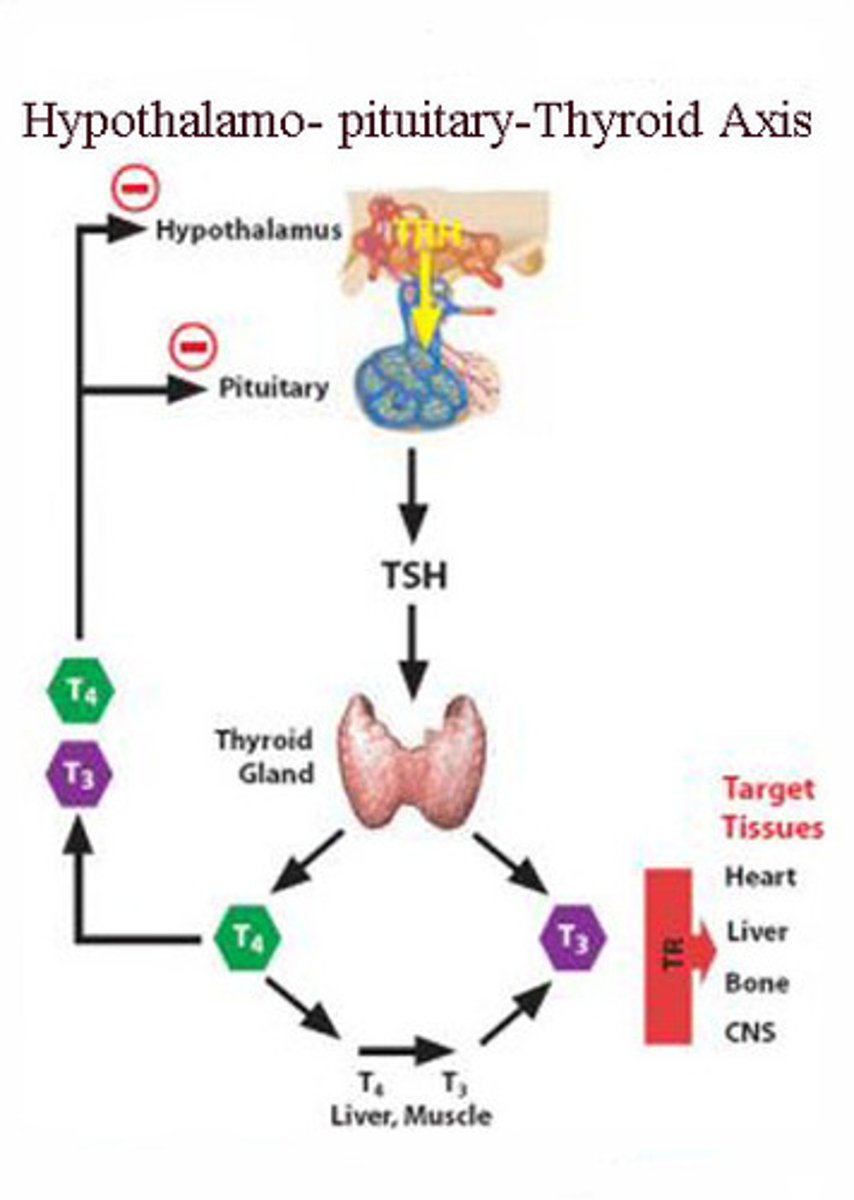
Where is the endocrine system regulated?
Hypothalamus
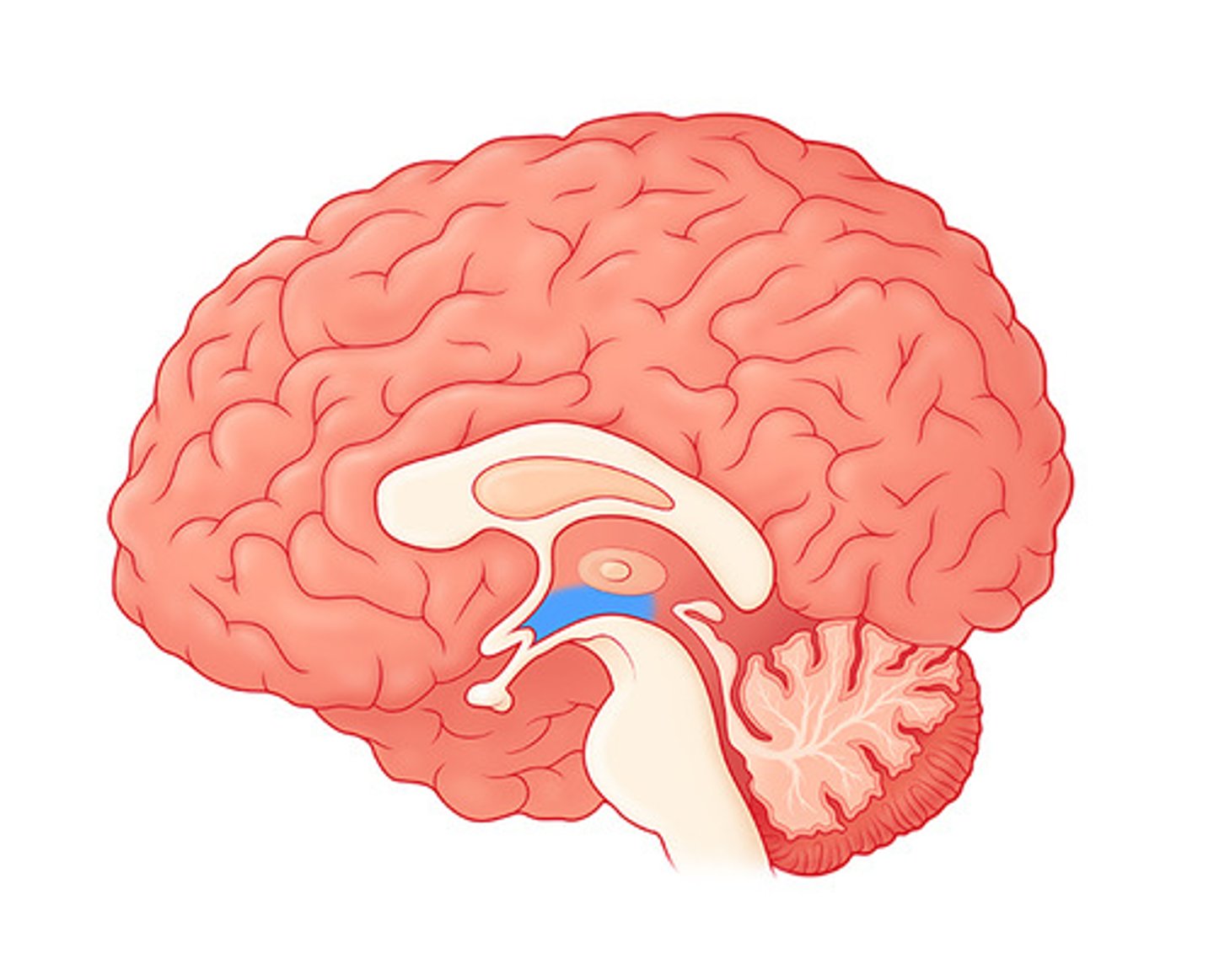
What can be altered at the hypothalamus?
Sensitivity of negative feedback
What can alter negative feedback which affects the hypothalamus?
- Stress
- Age
- Sleep/wake
Positive feedback loop
Signal increases its own output (Less common in physiology, cannot continue forever)
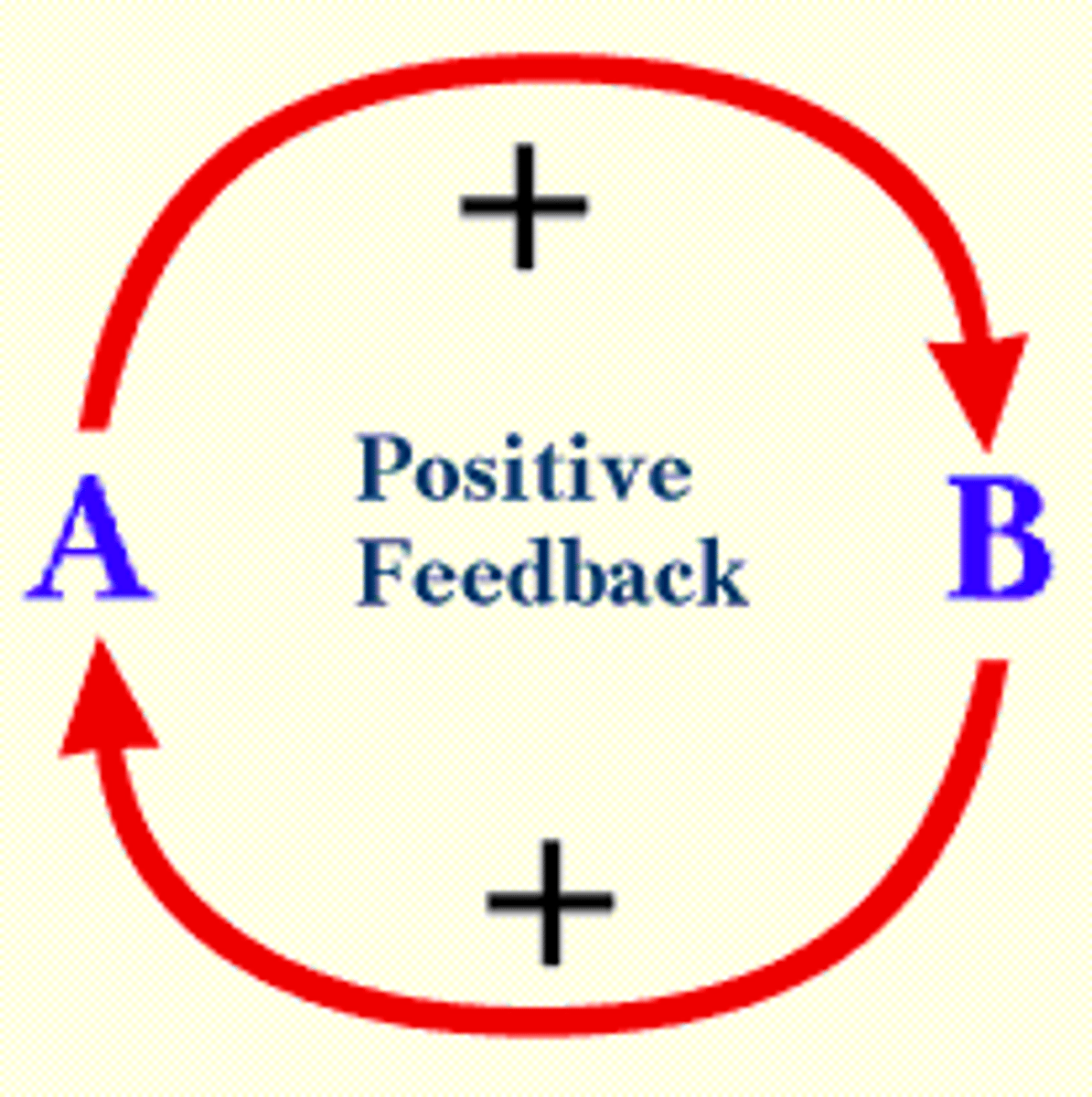
Adrenal cortex
Has 3 layers that produces specific classes of hormones
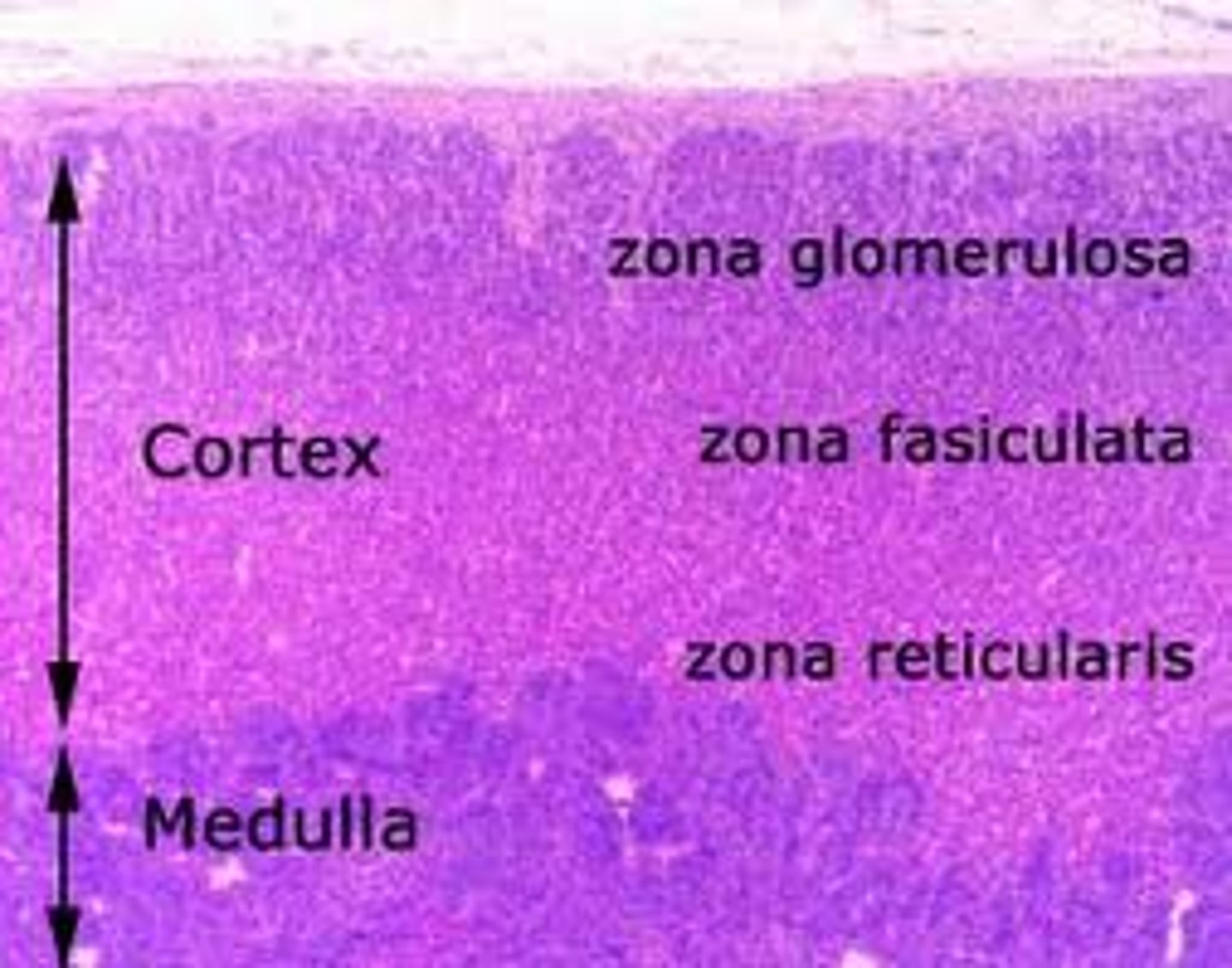
What are the 3 layers of the adrenal cortex?
1. Zona glomerulosa mineralocorticoids
2. Zona fasciculata- glucocorticoids
3. Zona reticularis-sex steroids

Zona glomerulosa
Secretes aldosterone which regulates potassium (K+) & H20
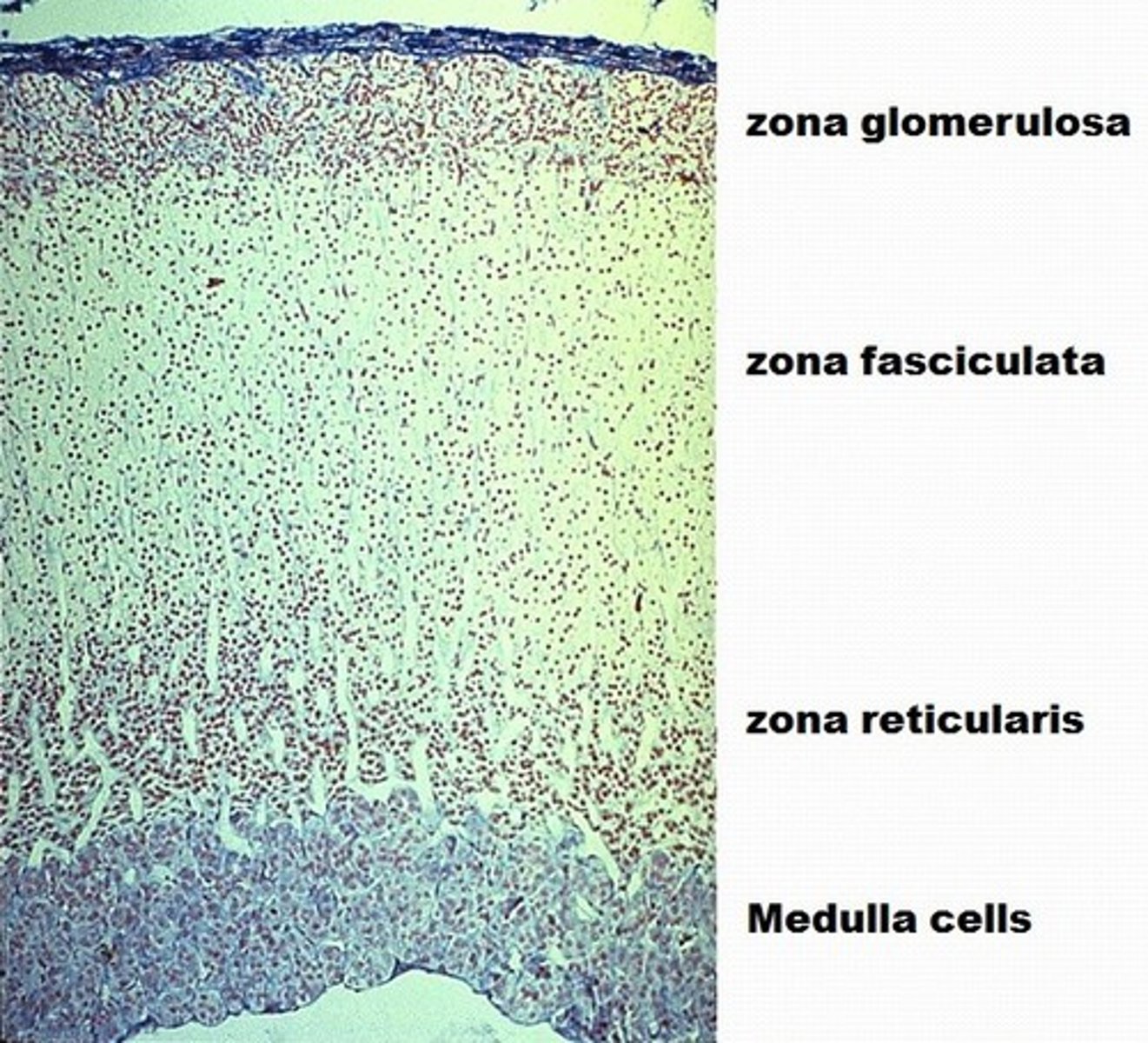
Mineralocorticoids
K+ & water regulation is necessary for life

Adrenalectomy
Most important hormone produced by the adrenal gland
1. Adrenalectomy → replaces the aldosterone → Live (but not healthy)
2. Adrenalectomy→ none → death

Aldosterone secretion
High potassium & angiotensin II which means high aldosterone (Does not involve hypothalamus)
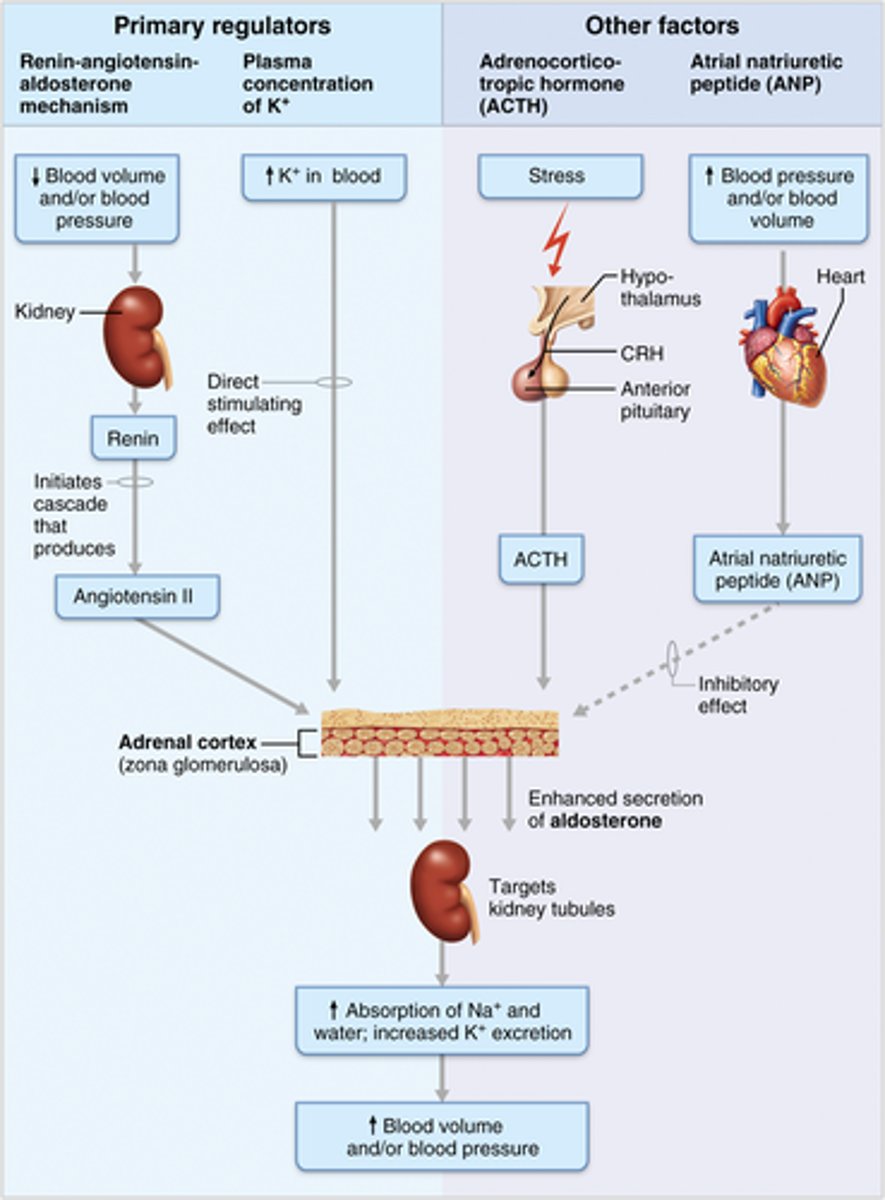
What is the processes of aldosterone secretion?
1. ↓ blood pressure
2. Renin angiotensin system or ↑ Potassium ions (K+)
3. Aldosterone
(Does not involve the hypothalamus)
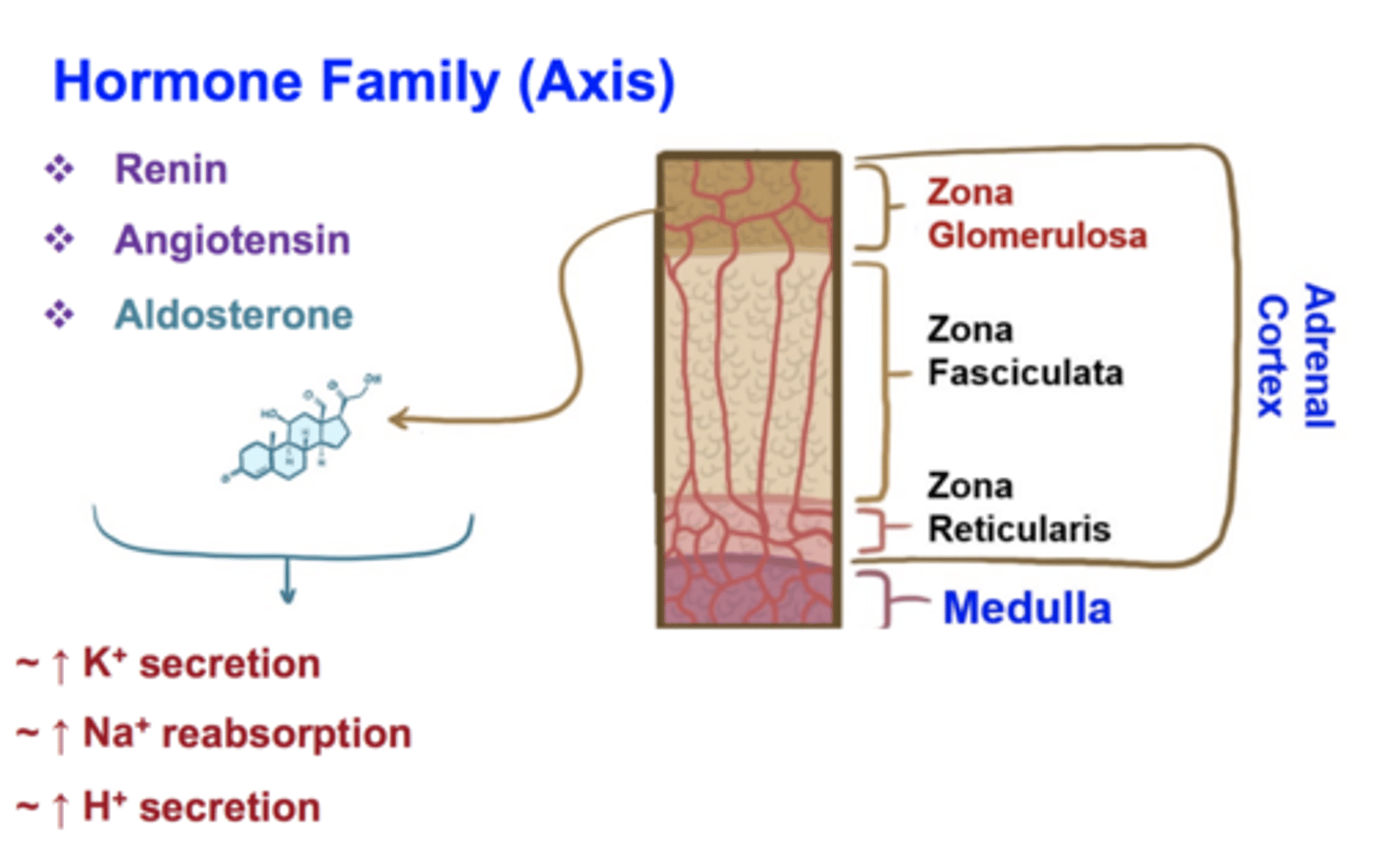
Aldosterone
Increases activity of principal cells in the distal tubule & collecting ducts

What are the three main functions of the aldosterone secretion processes?
1. Sodium reabsorption
2. Potassium excretion
3. Water conservation
What affect does aldosterone have on the Na+/K+ pump?
It increases the Na+/K+ pump activity to reabsorb more water.
1. Secretes potassium (K+)
2. Reabsorbs sodium (Na+)
2 K+ in the filtrate for every Na+ in the blood

Which way will the water go when aldosterone increases the Na+/K+ pump?
Since there is an increase in ions in blood, the water will follow to the blood because water moves from high concentration to low concentrations (osmosis), which then increases the blood volume

How many negative feedback loops control aldosterone?
2 feedback loops
1. Blood pressure and volume
2. Potassium levels in the blood

Blood pressure and volume aldosterone (feedback loop #1)
1. Low blood pressure
2. Kidneys release renin (triggers the production of angiotensin II)
3. Angiotensin II (increased aldosterone secretion from adrenal glands)
4. Kidneys reabsorb more sodium & water
5. Increases blood volume
6. Decrease aldosterone production
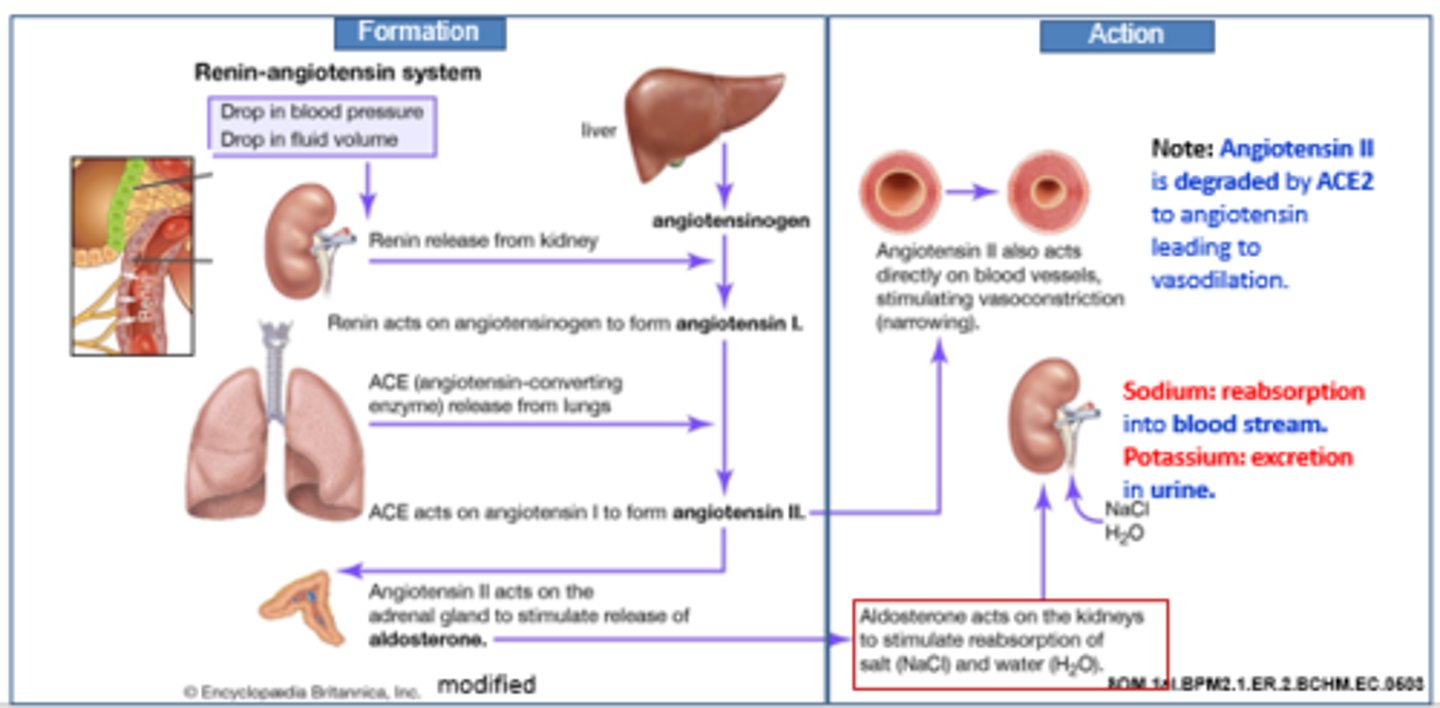
Potassium levels in the blood aldosterone (feedback loop #2)
1. Raise in blood potassium levels
2. Release of aldosterone from adrenal glands
3. Promotes excretion of potassium in the urine
4. Lowering blood potassium levels back to normal
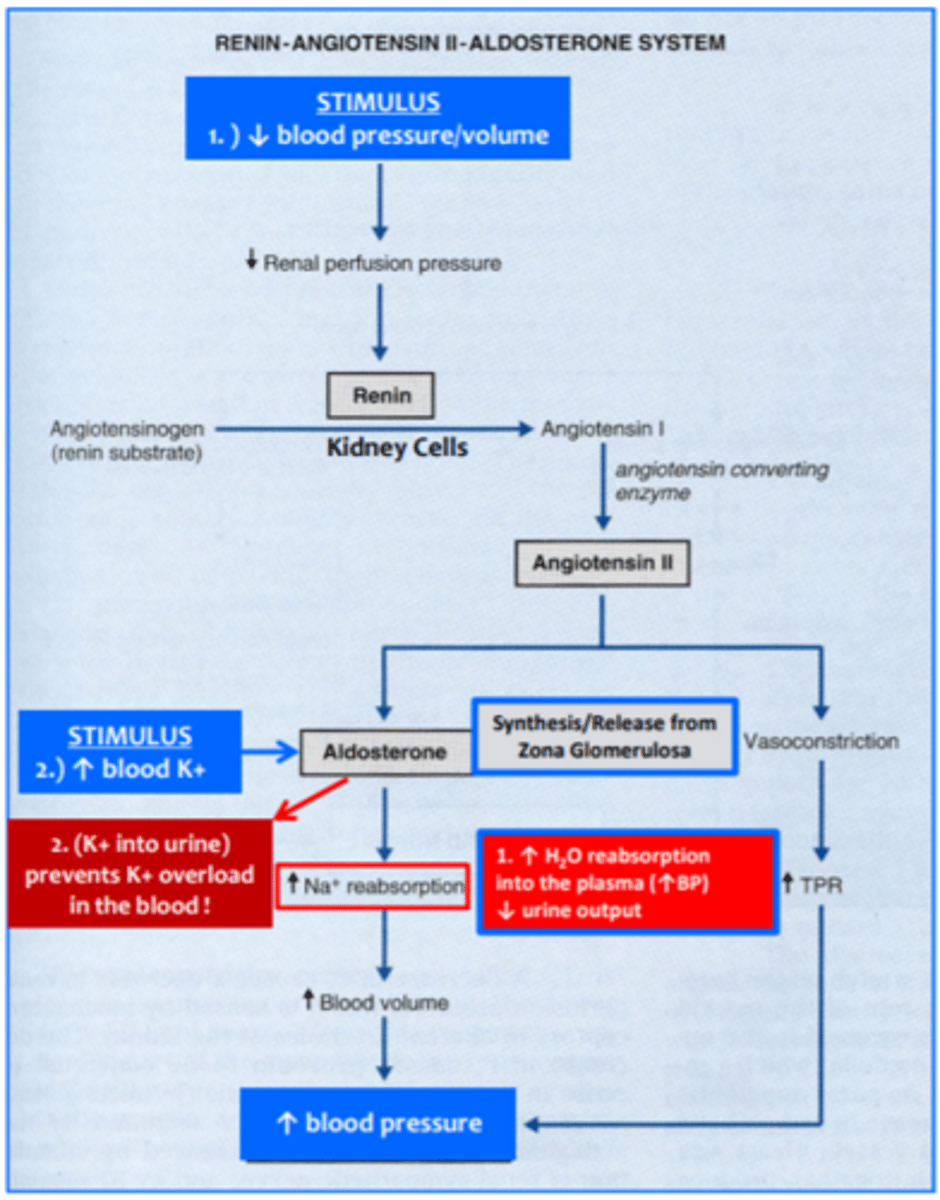
Zona fasciculata
Secretes glucocorticoids
- Cortisol
- Corticosterone
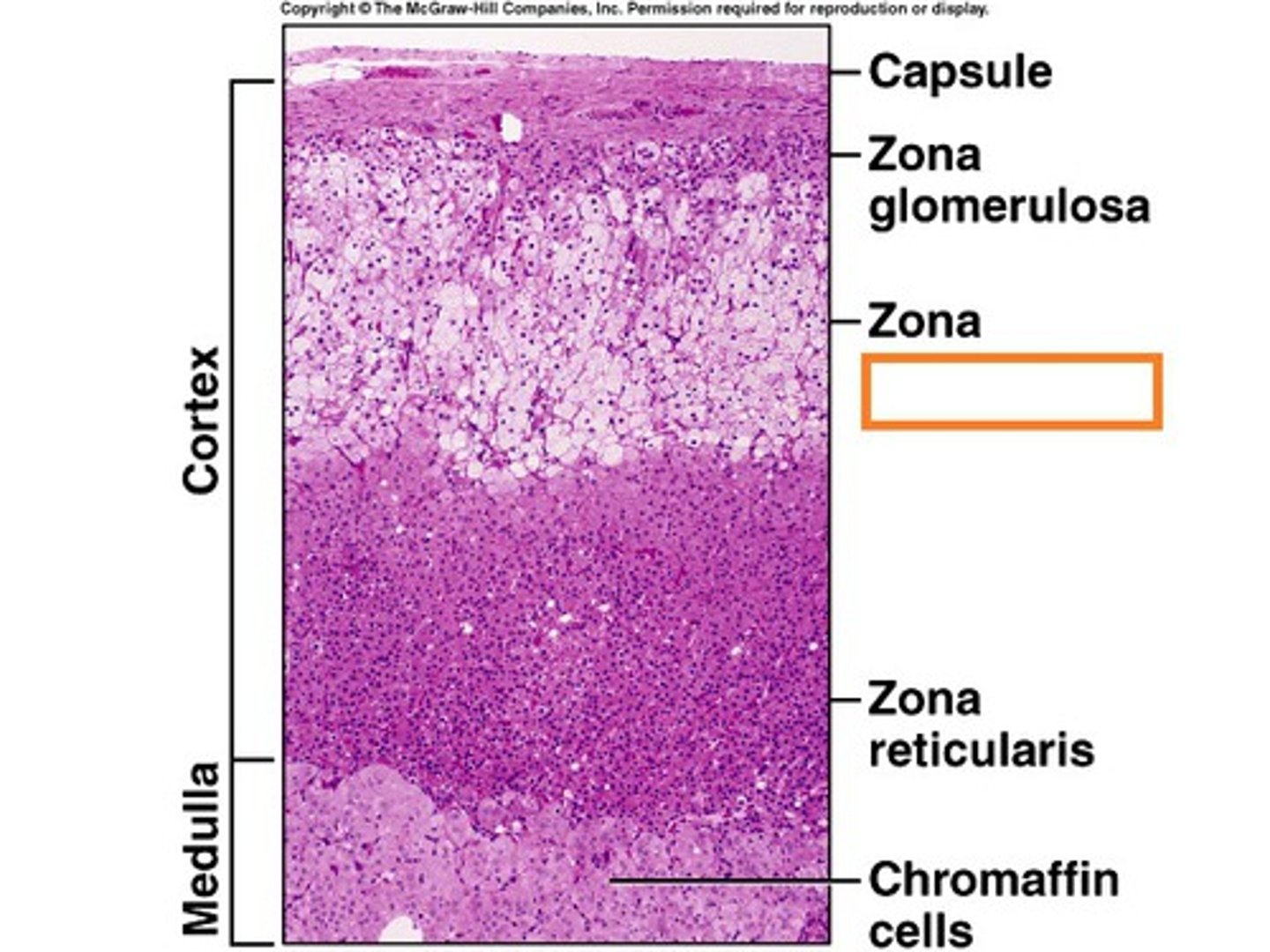
Hypothalamic-pituitary-adrenal (HPA) Axis
Regulates the glucocorticoid production

CRH
Corticotropin releasing hormone
Corticotropin releasing hormone (CRH)
Stimulates the release of adrenocorticotropic hormone (ACTH) into the general circulation
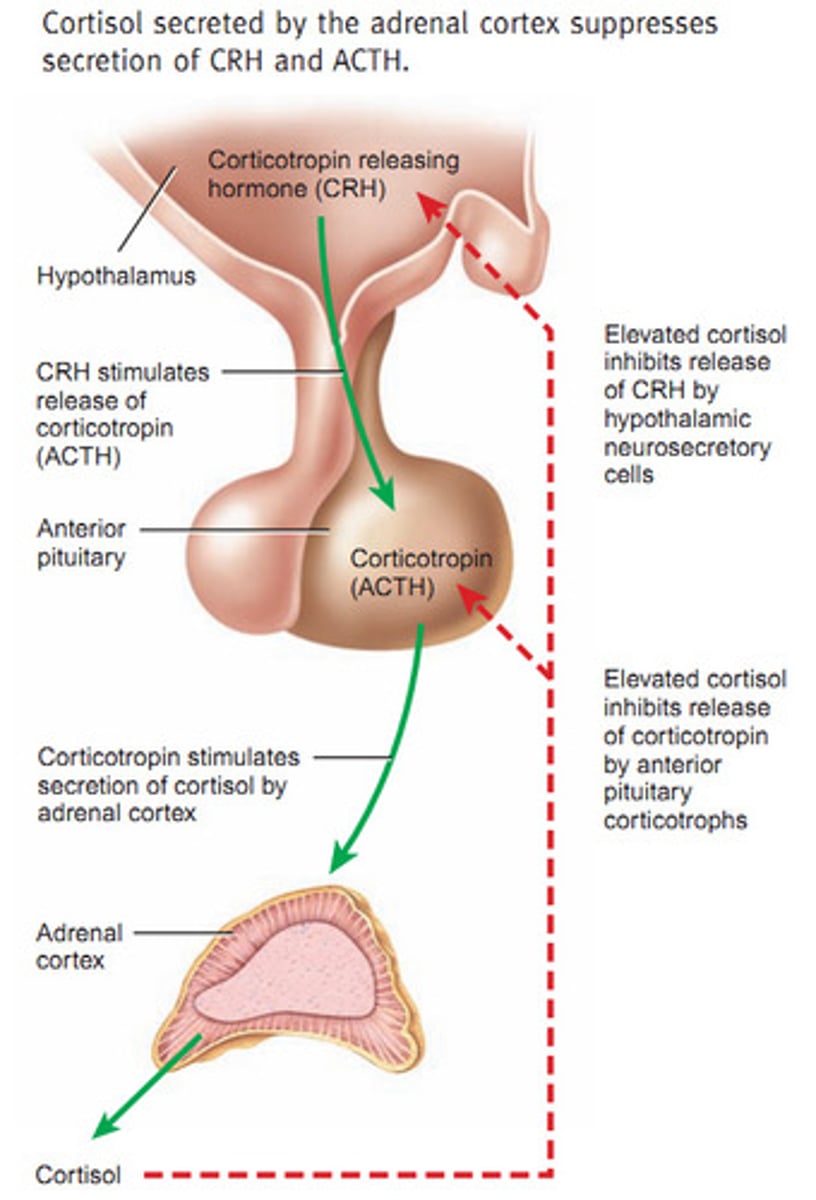
ACTH
Adrenocorticotropic hormone
Adrenocorticotropic hormone (ACTH)
Stimulates the production of glucocorticoid hormones, cortisol, & corticosterone
- Cortisol: humans, most mammals
- Corticosterone: rodents, amphibians, birds
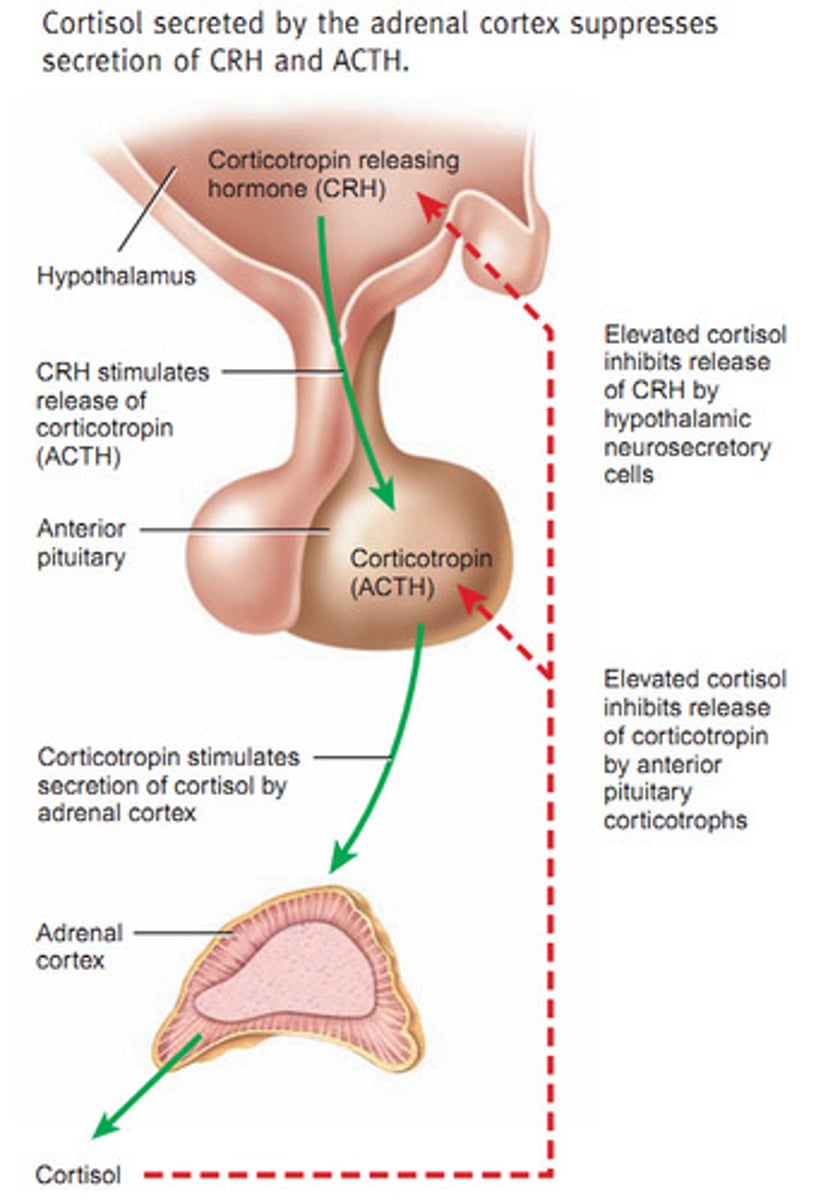
Cortisol
1. Increases serum glucose concentrations
2. Suppress inflammation
(Negative feedback loop)
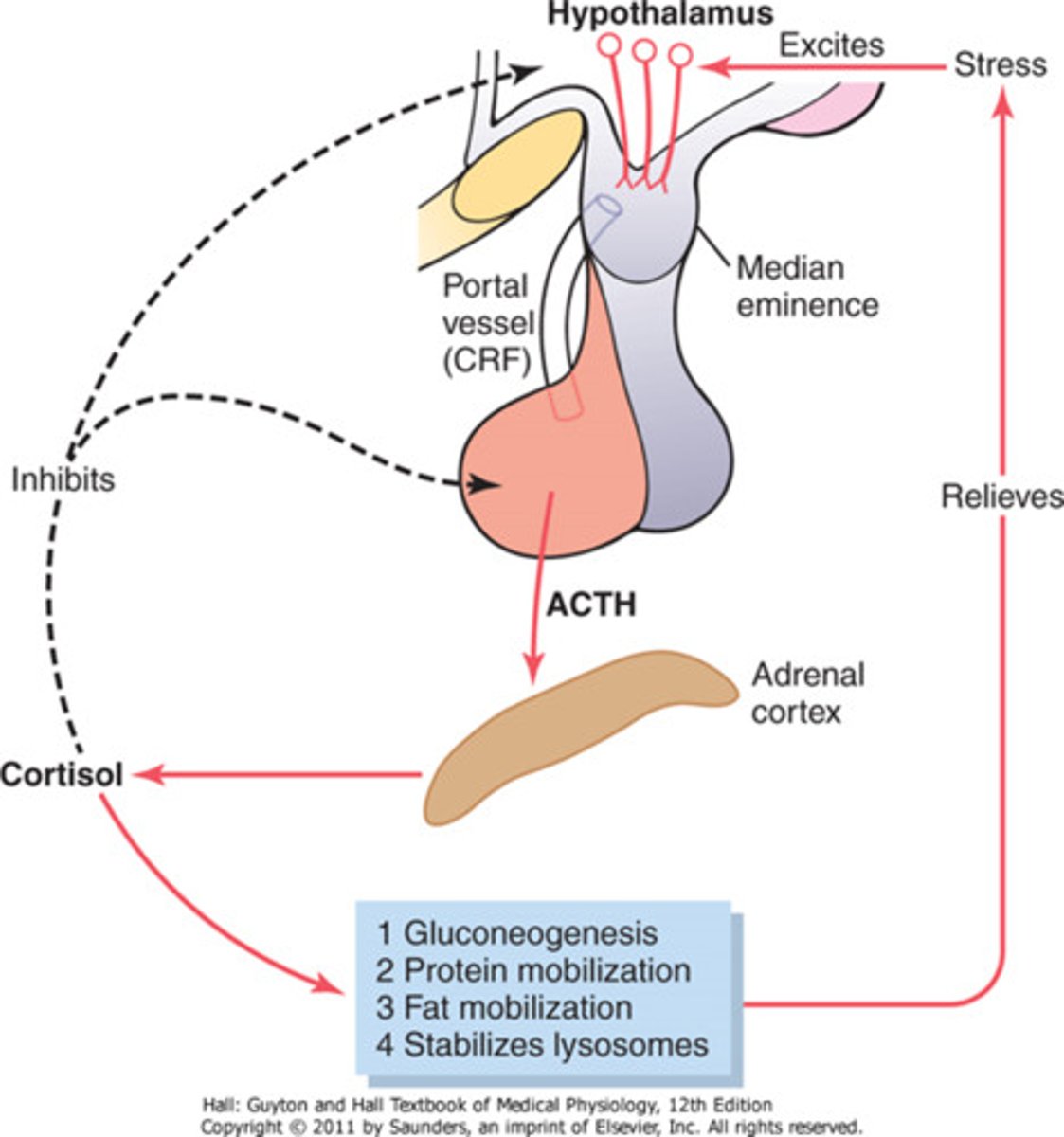
The pituitary
Synthesizes POMC in response to CRH ( Corticotropin-releasing hormone)
POMC
Proopiomelanocortin, precursor of adrenocorticotropic hormone (ACTH), melanocyte-stimulating hormone (MSH), and endorphin (END)
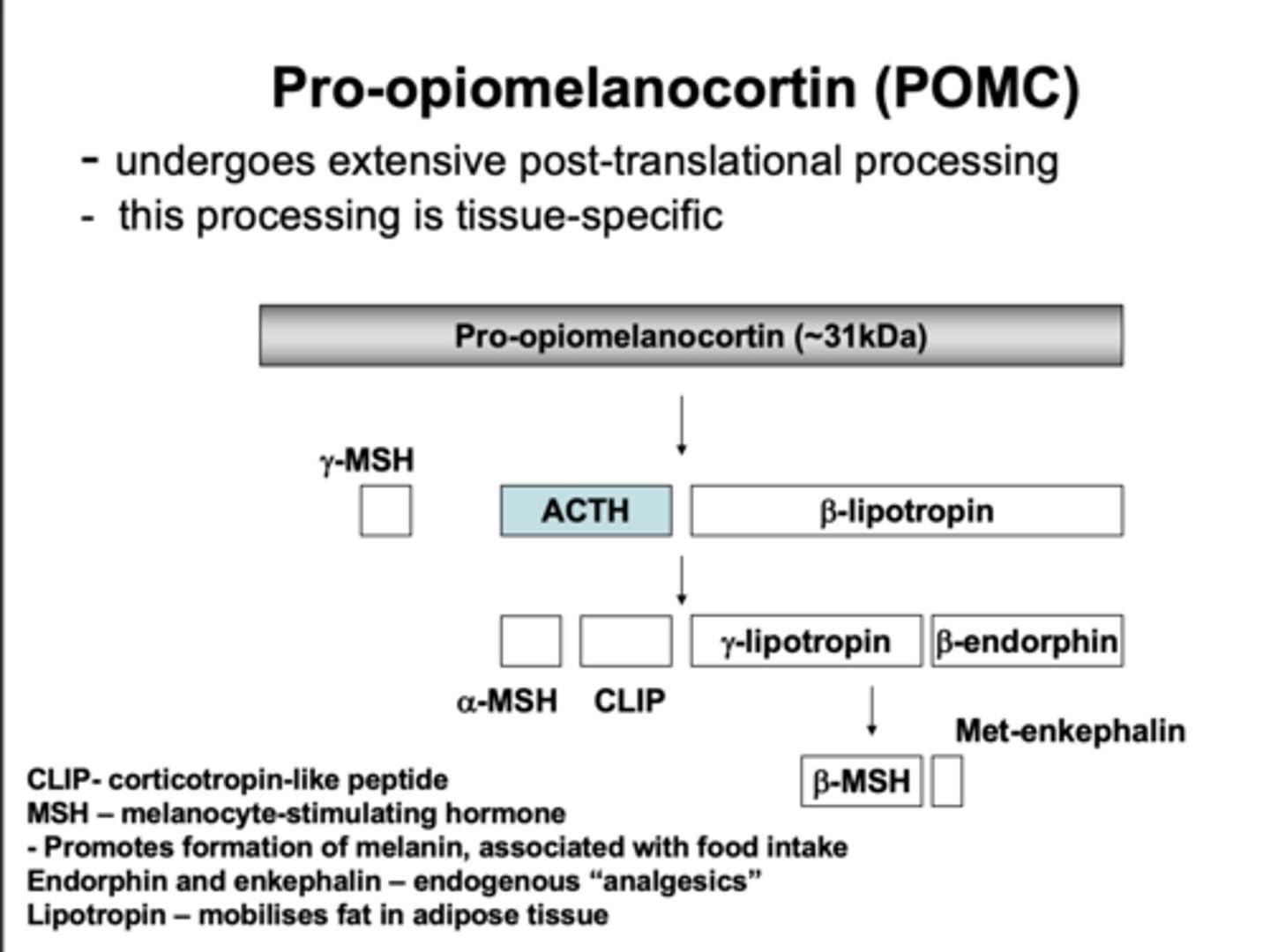
How does CRH promotes more POMC
1. CRH reaches the posterior pituitary by the portal system
2. CRH binds to the receptor
3. Anterior pituitary produces more POMC
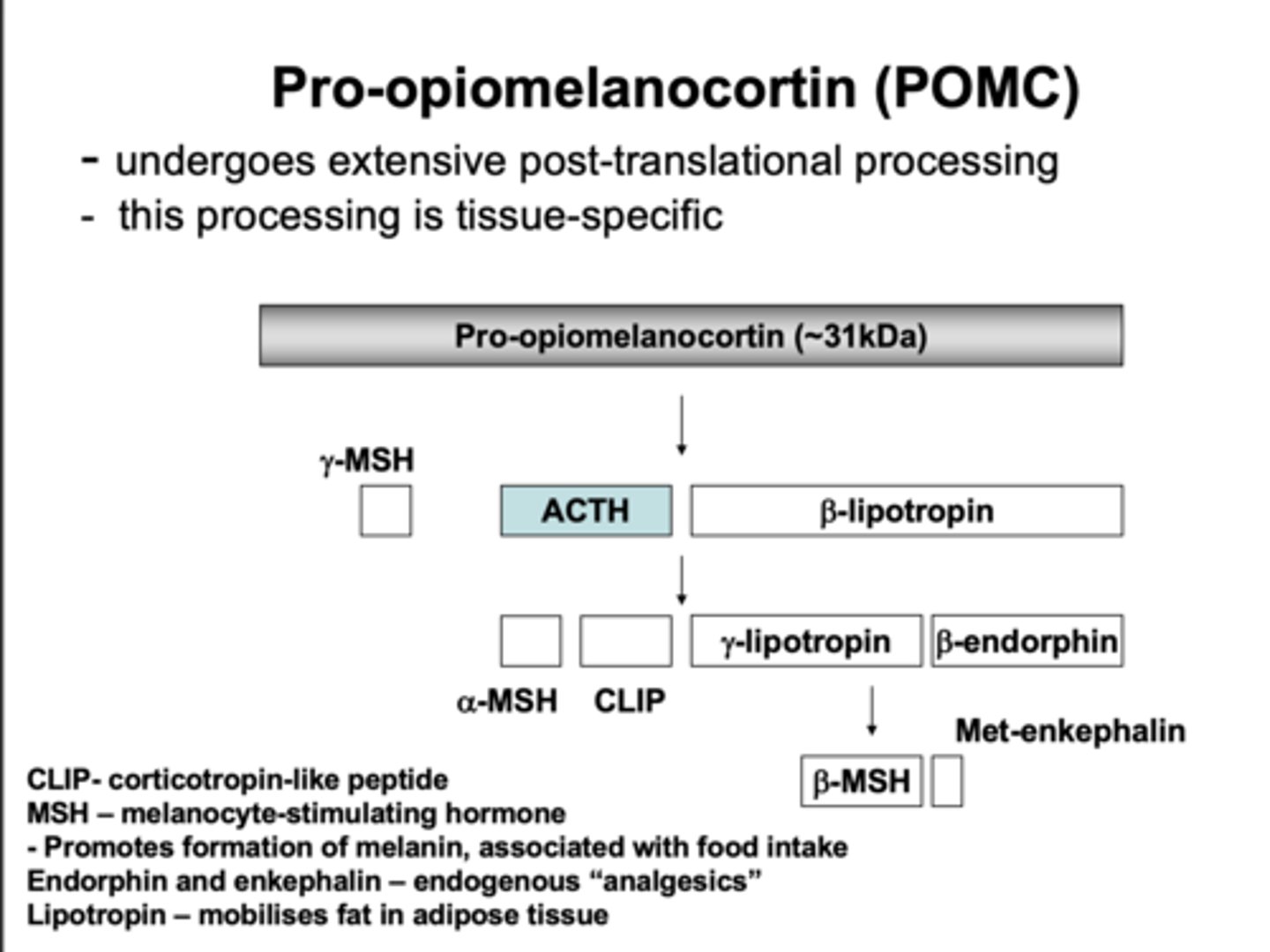
What does Cortisol & corticosterone do?
1. Cortisol (mammals) & corticosterone (bids & rodents) are made out of cholesterol
2. Diffuses out of the cell after it is produced
3. Stimulates transcription of mRNA in target cells
(Both of them are steroids)

Increases serum glucose concentrations (effects of cortisol)
- Shifts most tissue towards lipids and protein for energy
- Muscle decrease protein content (higher amino acids in blood)
- Adipocytes release lipids into circulation
- Liver produces glucose (Increased plasma glucose concentrations)
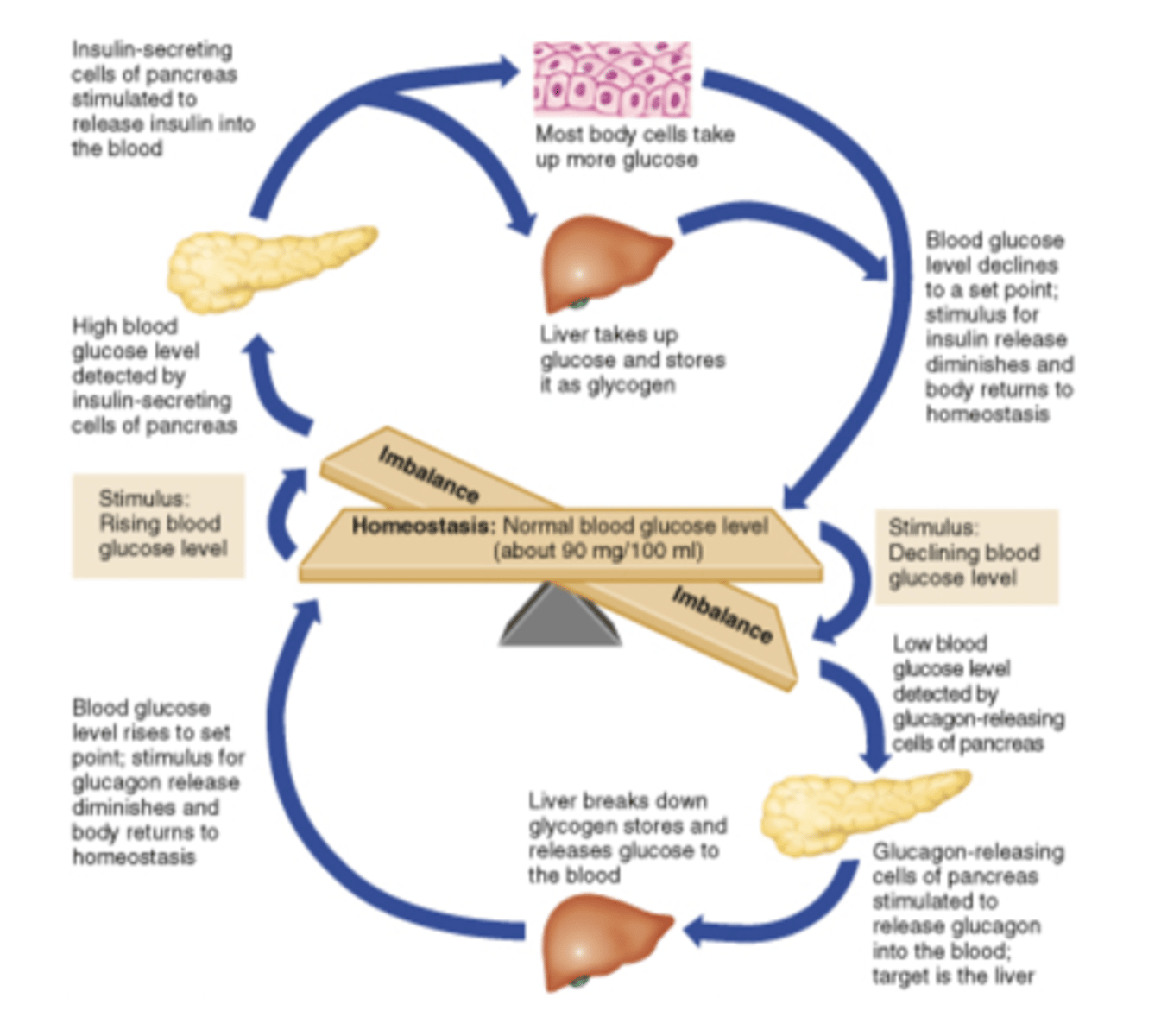
Reduces inflation by suppressing the immune system (effects of cortisol)
- Reduces release of proinflammatory signals
- Decreases capillary permeability
- Reduces fever
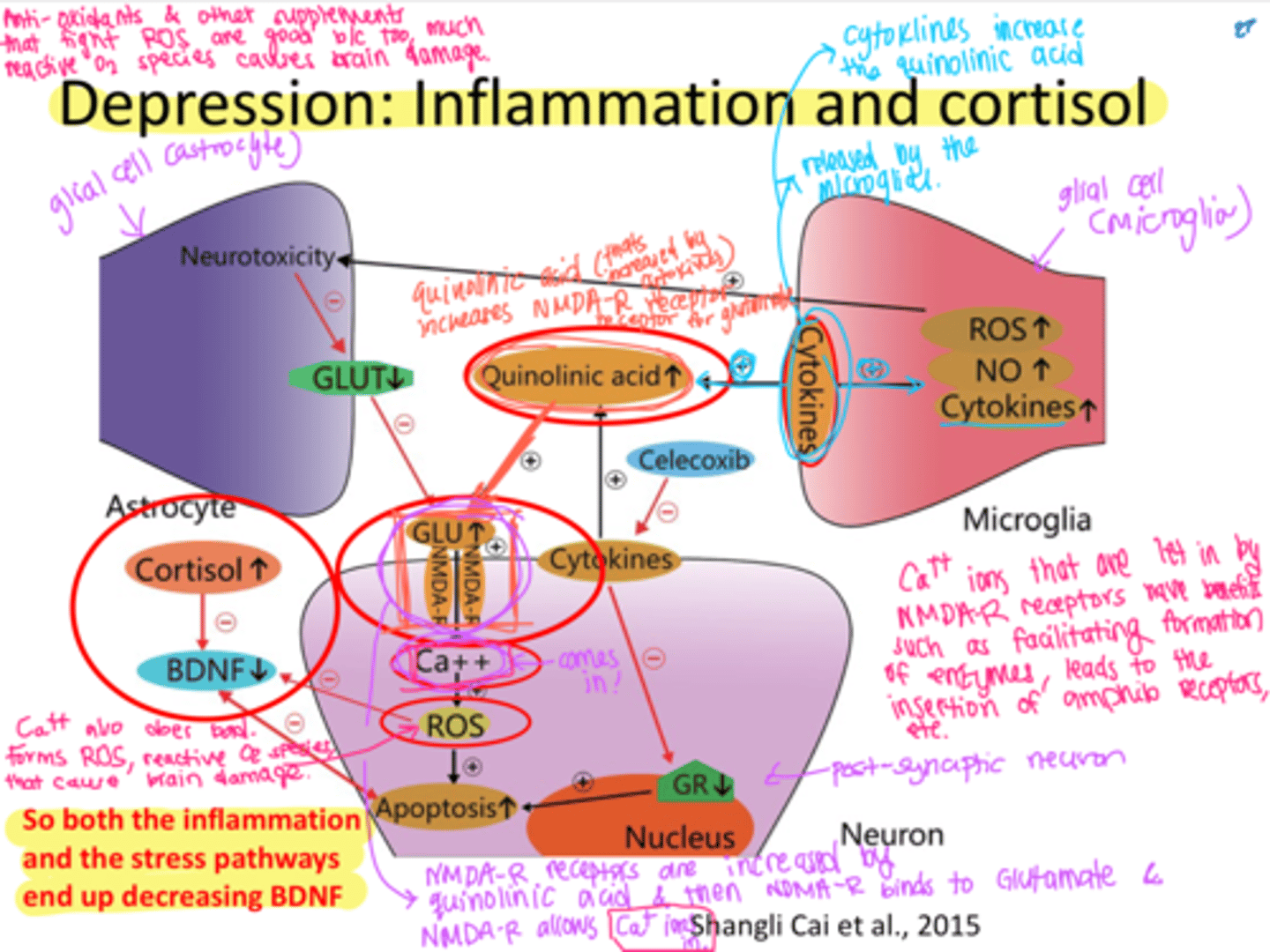
What is a major regulator of the HPA Axis?
Stress, short-term which is good, but long-term: bad.
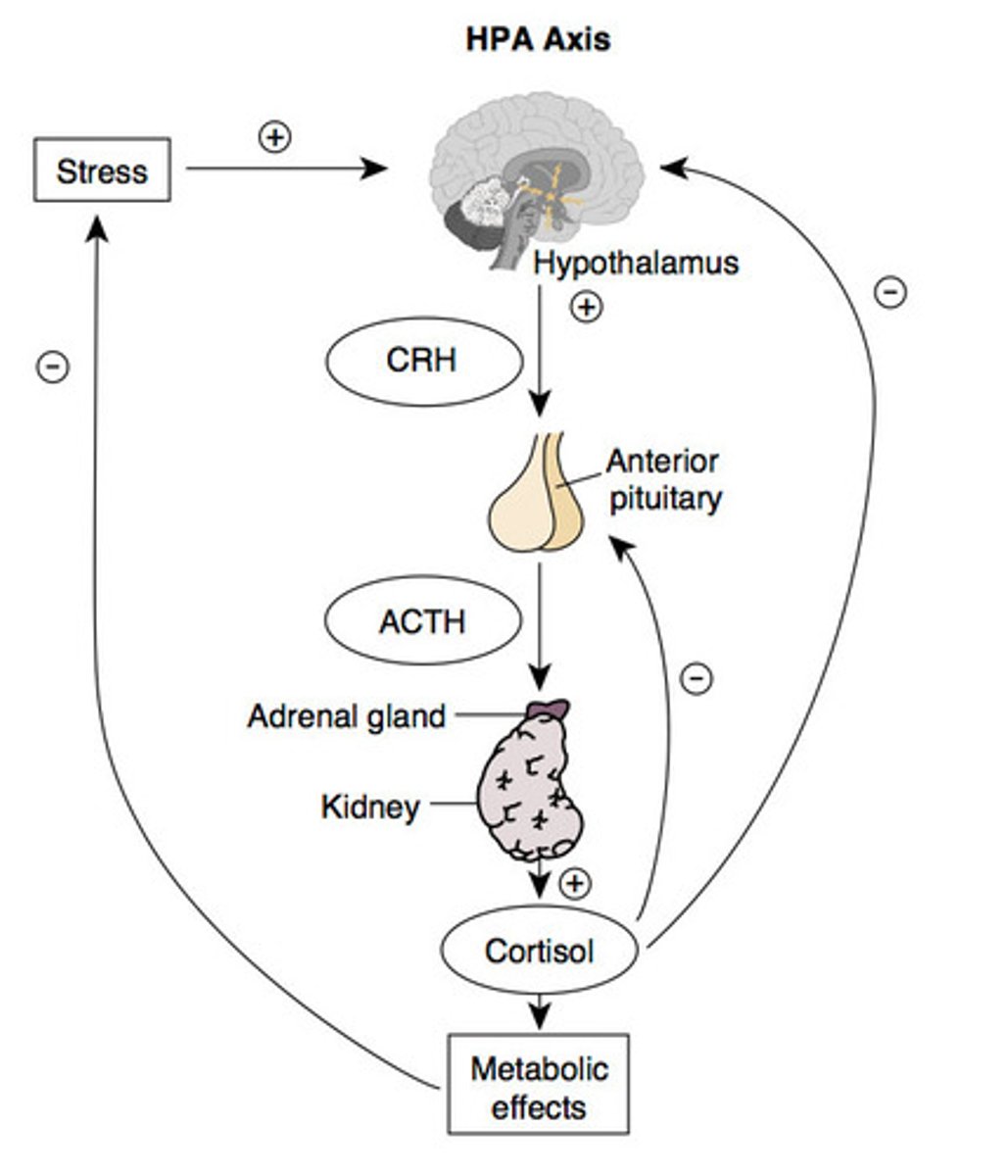
Short term effects of stress on the HPA Axis
- Increase glucose for brain & muscle
- Ignore injury
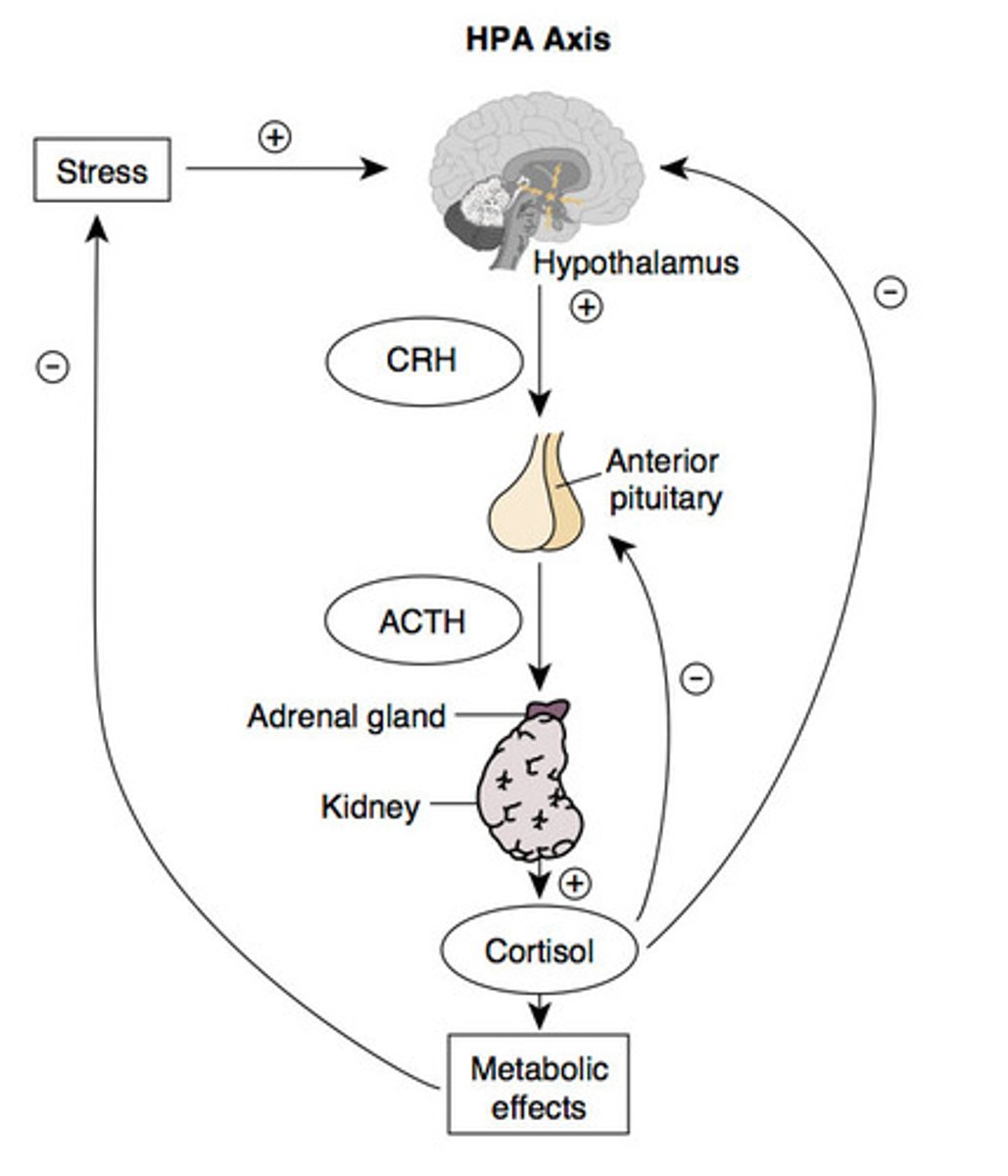
Long term effects of stress on the HPA Axis
- Increase infections
- Loss of muscle mass
- Weakening of skin
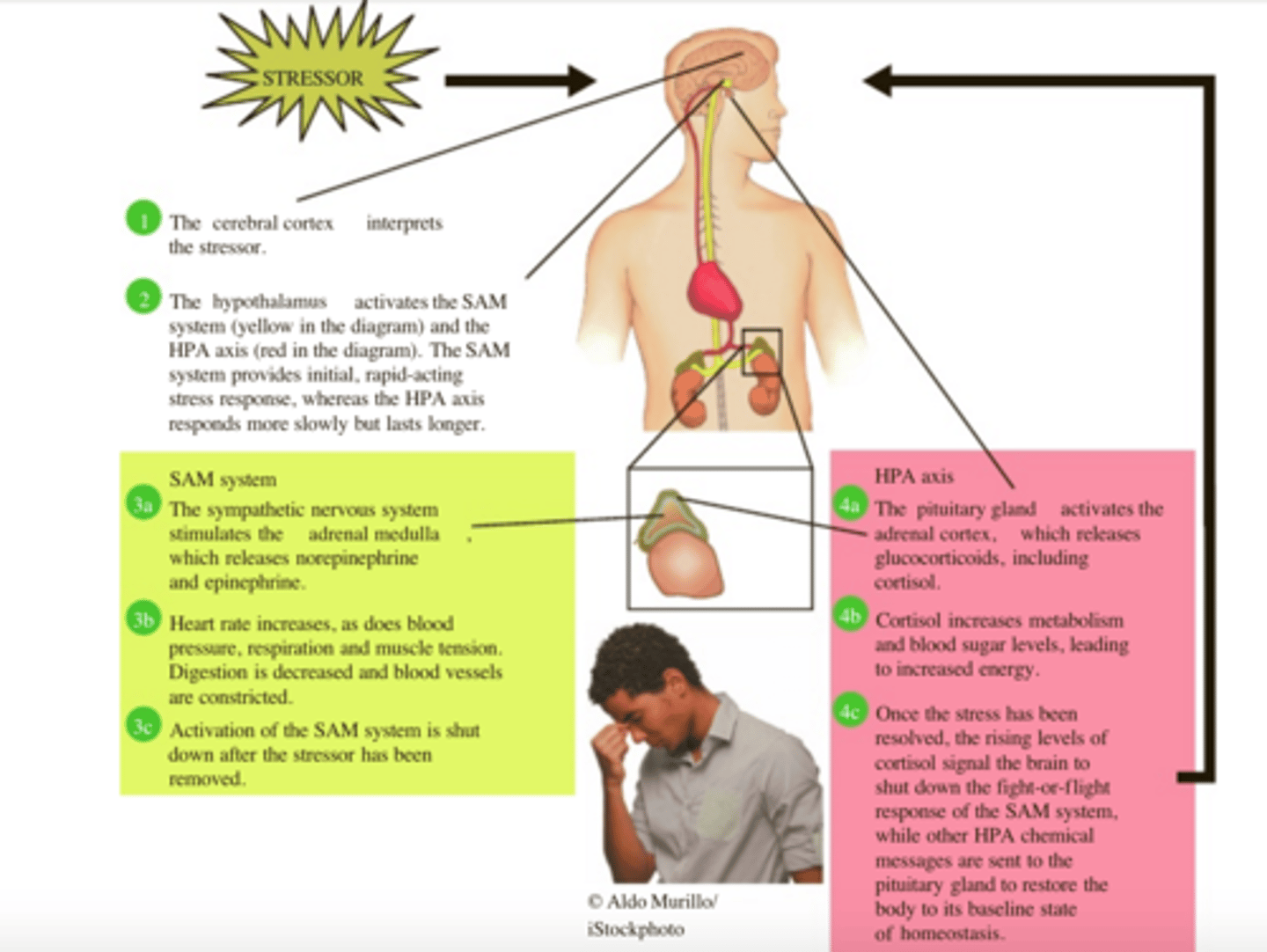
Addison's Disease (adrenal insufficiency)
Adrenal insufficiency
- Lack of cortisol
- Lack of gluconeogenesis
- Cannot maintain glucose concentrations between meals
- Lack of aldosterone
- Lack of Na+ and water reabsorption
- Gradual decrease in blood pressure
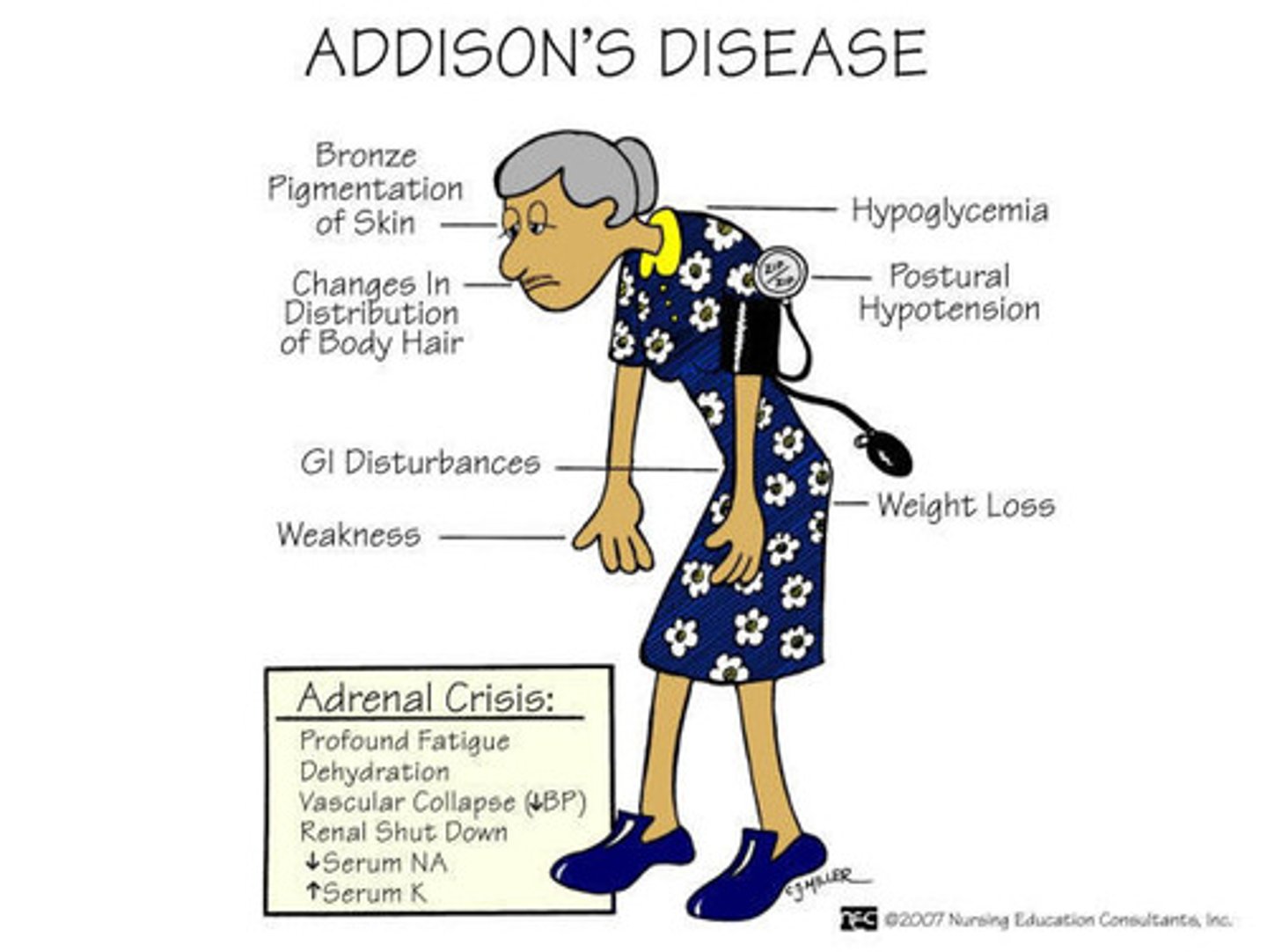
Why might adrenal insufficiency leads to darkening of the skin?
Since there is no cortisol it leads to no negative feedback loop, which causes a major increase in POMC production
Crushing's Syndrome (Hyperadrenalism)
- Too much cortisol
- Adrenal tumor: secreted cortisol
- Pituitary tumor: secreting ACTH
- Increase plasma glucose
- Loss of muscle
- Weakening of skin
- Weakened immune system

Zona Reticularis
Secretes weak androgens
- Dehyrdopiansterone (DHEA)
- Androstenedione
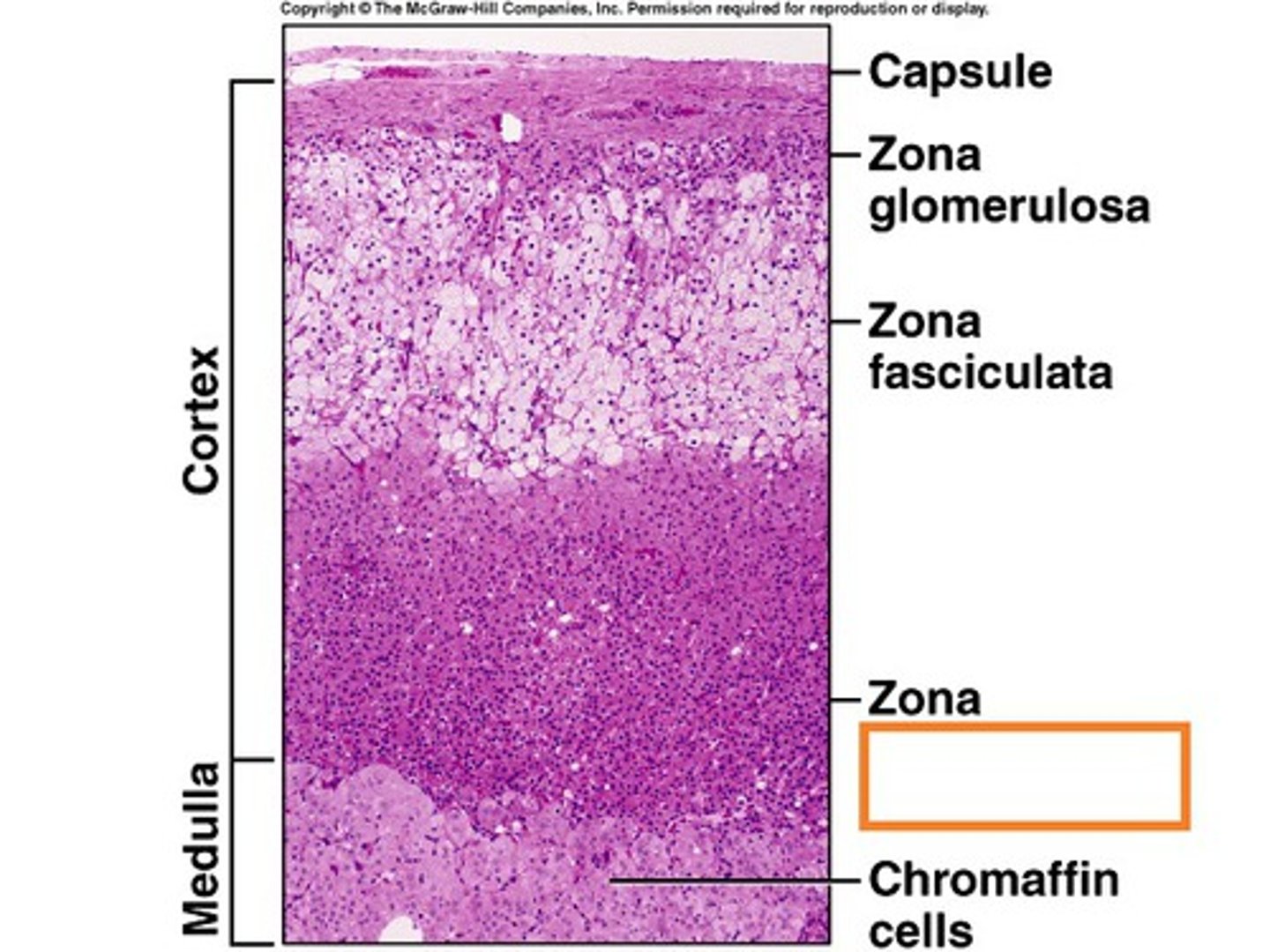
Androgens
Male sex hormones (classification)
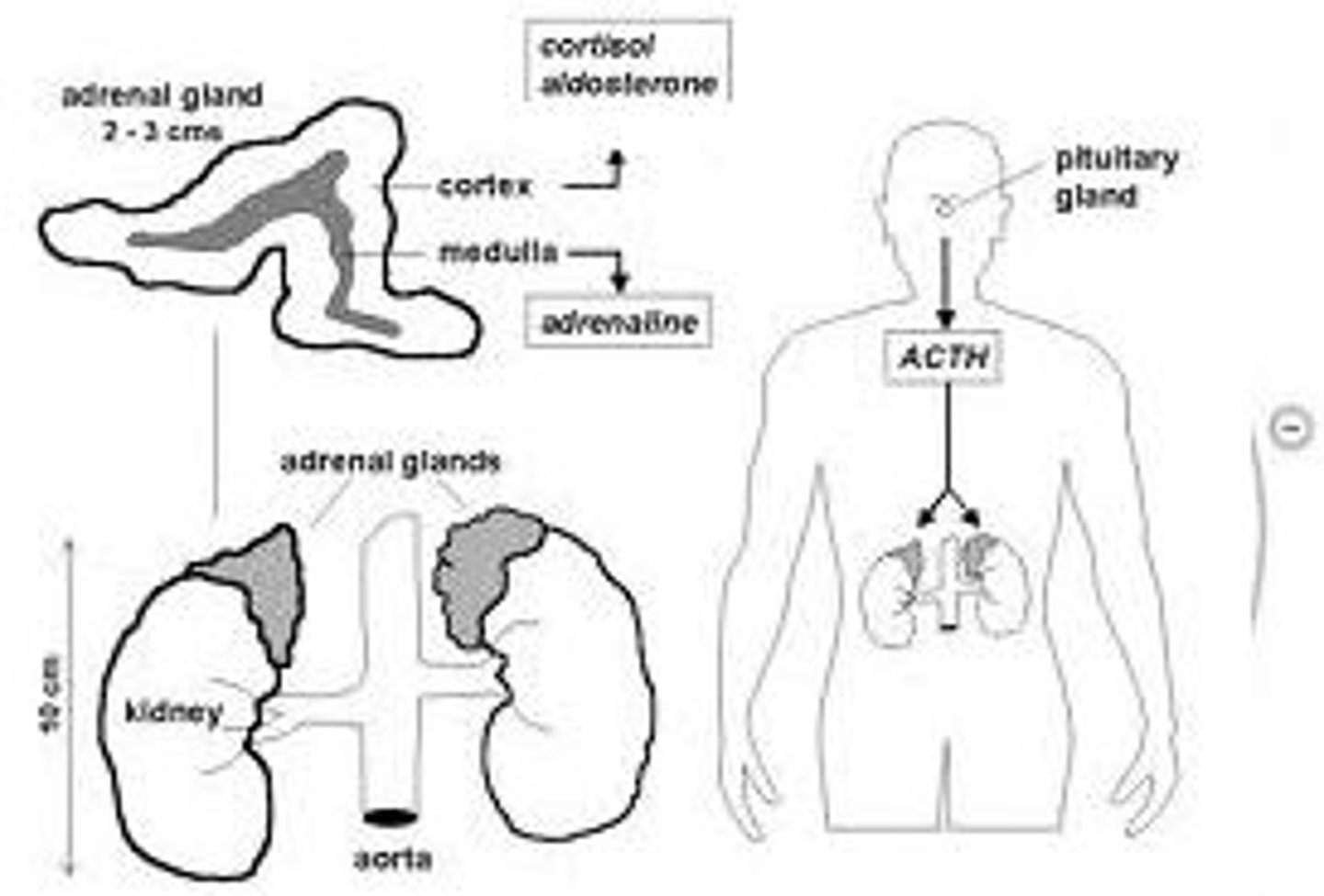
DHEA
Dehyrdopiansterone
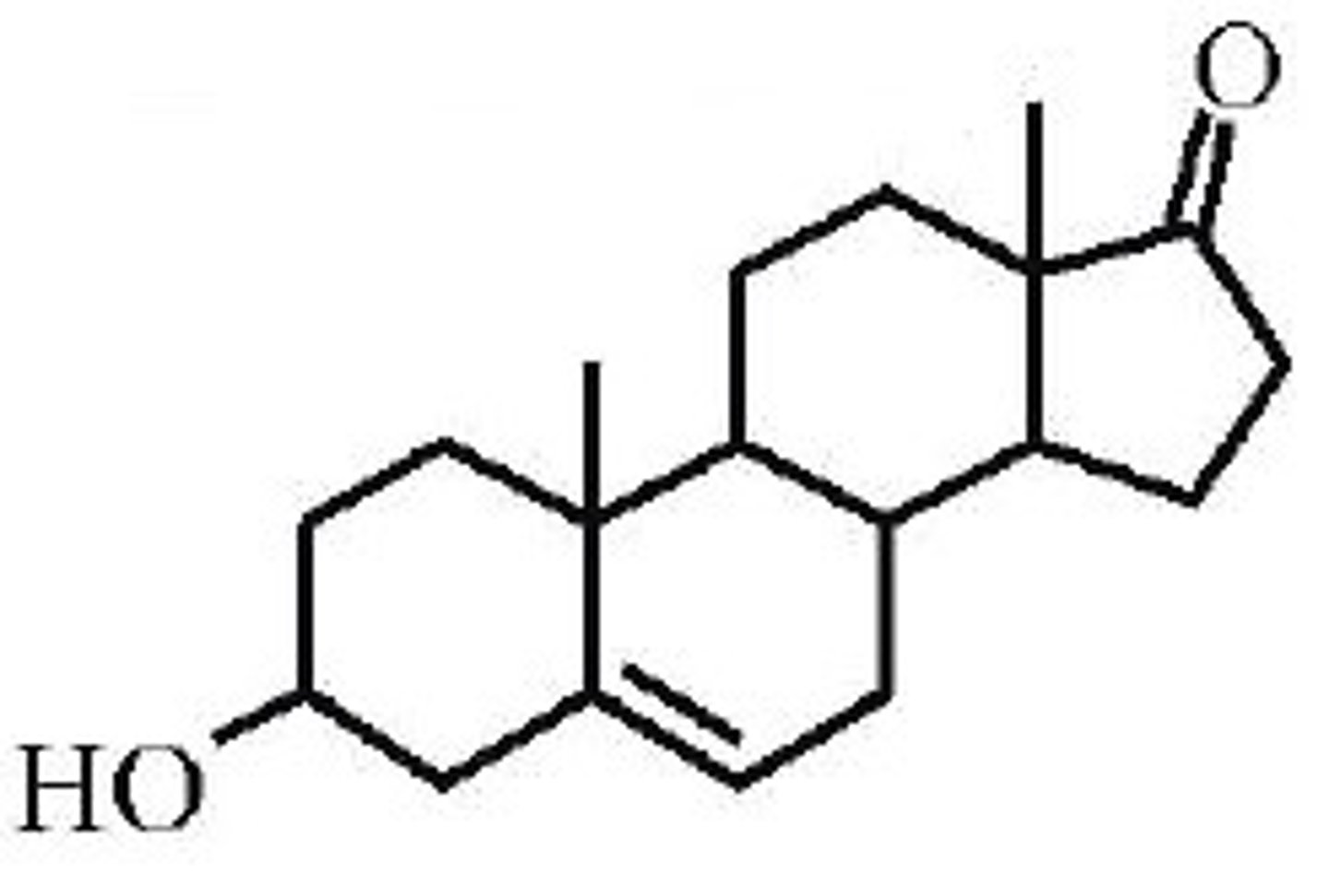
Dehyrdopiansterone (DHEA)
In humans, peaks in early 20s & decline with age.
- Higher concentrations than any other steroids
- Concentrations decrease starting in 20s
- Other mammals have much lower concentrations
Effects of adrenal dehyrdopiansterone (DHEA)
Unlikely to be biologically important most of the time
- Weakly binds to multiple steroid receptors
- Too weak to have effects in normal males
- Unlikely to be important in normal circumstances
- Could be converted to other androgens (castrated males or post-menopausal women)